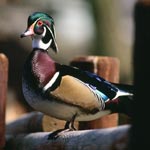Common US birds could spread H5N1

US researchers have reported that birds found commonly in North America, including the common wood duck and laughing gull, are highly susceptible to the H5N1 avian influenza virus and could transmit the disease.
The University of Georgia researchers say different species of North American birds would respond very differently if infected with the bird flu virus.
Professor David Stallknecht, co-author of the study, said that in order to be able to quickly detect and fight the disease, it’s important to know which species are likely to be affected by highly pathogenic H5N1, should it arrive in North America.
“If you’re looking for highly pathogenic H5N1 in wild birds, it would really pay to investigate any wood duck deaths because they seem to be highly susceptible, as are laughing gulls,” said Stallknecht.
“It was also very interesting that in some species you normally think of as influenza reservoirs – the mallard, for instance – the duration and extent of viral shedding is relatively low. This may be good news since it suggests that highly pathogenic H5N1 may have a difficult time surviving in North American wild birds even if it did arrive here.”
The study’s findings appear in the November issue of the journal Emerging Infectious Diseases.













